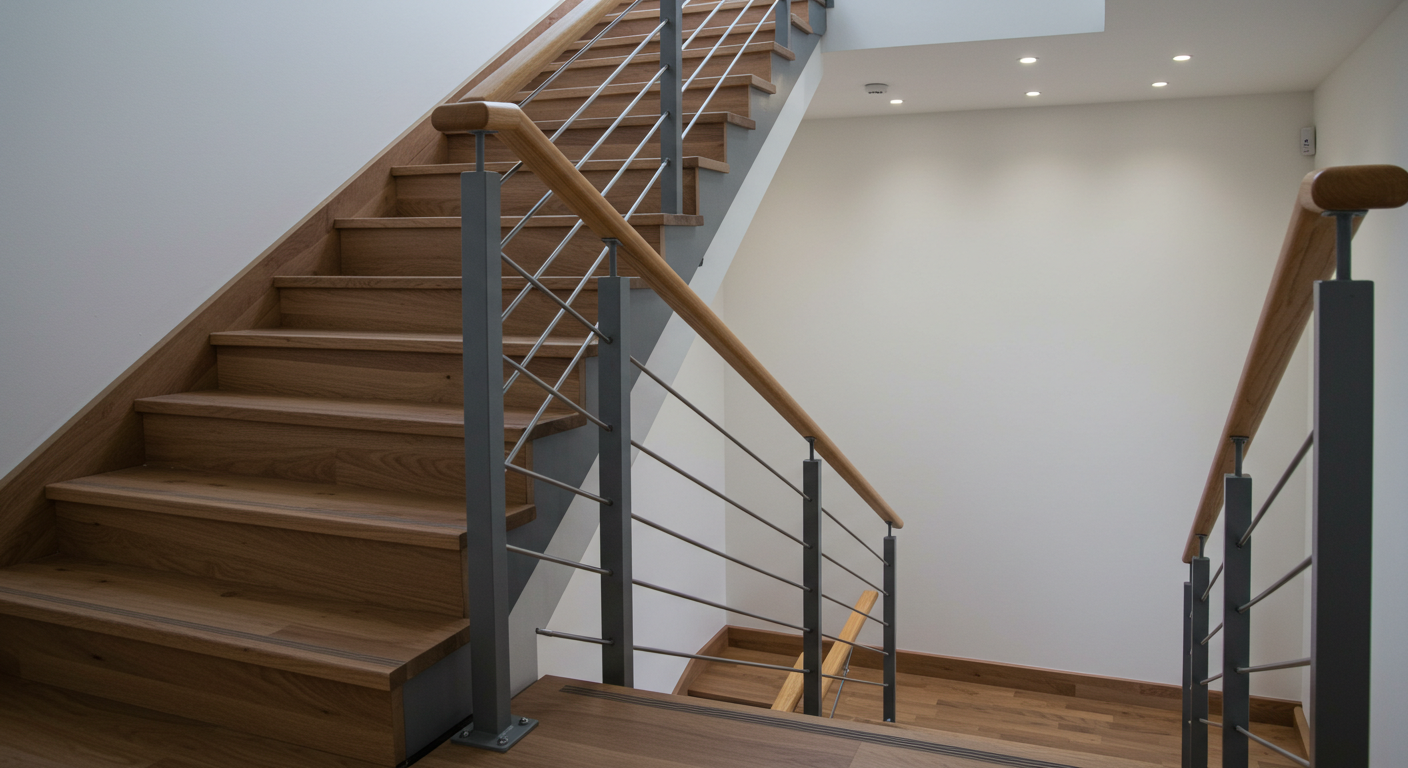In the realm of home design and safety, railings serve as an essential, yet often overlooked. With an increase in home renovations and new constructions focusing on both aesthetics and functionality, understanding the critical role of railings is paramount. Whether it’s a sleek modern design or a traditional wooden aesthetic, railings not only prevent falls but also enhance the overall appeal of a space.
The Critical Role of Railings in Staircase Safety
When it comes to staircase safety, railings are not merely ornamental; they serve as vital safety features designed to protect individuals from falls and accidents. A properly installed railing can significantly reduce the risk of slips. Safety measures surrounding railings revolve around several factors, including height, material, and design. Adhering to safety codes ensures that these features provide adequate protection.
Types of railings vary widely based on their intended use. For instance:
- Stair railings: These are installed alongside staircases to provide support while navigating up or down.
- Guardrails: Commonly found on balconies and terraces, they protect from falls over edges.
- Handrails: Typically grasped by users, they are designed to enhance stability.
How Railings Protect the Vulnerable
For families, especially those with children, the importance of sturdy railings cannot be overstated. Children are naturally curious and sometimes careless when it comes to navigating stairs. Having a secure railing provides a vital safety measure, allowing parents to rest assured that their children have a support system in place as they explore. Similarly, the elderly and individuals with mobility issues benefit immensely from railings that offer stability and support.
Creating Safer Environments with Effective Design
Staircases and platforms devoid of railings can quickly become hotspots for accidents. Therefore, effective railing design is essential for safety. When crafting staircase safety solutions, several vital aspects should be taken into account:
- Height: Proper height ensures that individuals can access the handrail comfortably.
- Spacing: The spacing between balusters must be narrow enough to prevent children from slipping through.
- Grip: Handrails should have a design that allows for a secure grip, minimizing risks of slips.
The Importance of Compliance with Safety Standards
Adhering to safety standards is not merely recommended; it’s necessary to create secure environments. In residential spaces, local building codes dictate specific requirements for railings. Typically, these consist of guidelines regarding the minimum height of railings and the maximum spacing allowed between balusters. Compliance with these standards serves to protect users and alleviate liability concerns for homeowners.
Understanding Building Codes for Railings
Each location has specific codes governing railing safety, and it is essential for homeowners to be aware of these regulations. Here’s a brief overview of common building code requirements:
- Handrails should be installed at a height between 34 and 38 inches.
- The distance between balusters should not exceed 4 inches to prevent a child from slipping through.
- Railings should be secured firmly to withstand daily use without wobbling.
Another vital consideration is the installation of railings for outdoor spaces, where exposure to environmental elements can lead to quicker deterioration. Utilizing weather-resistant materials or coatings is advisable. Companies like Cashman Roof and Rail specialize in creating durable outdoor railing systems that ensure safety even in harsh weather conditions.
Elevating Aesthetics Through Smart Railing Design Choices
Integrating safety and style is where the modern homeowner excels. Railings today offer more than just functional benefits; they can also serve as striking design elements. Whether opting for refined wrought iron styles or sleek cable railings, homeowners have a plethora of choices that allow them to express their personal style while ensuring stairway safety.
Customizable Options for Unique Spaces
Some design considerations include:
- Material: Choosing between wood, metal, glass, or composite materials based on design preferences and safety needs.
- Finish: Selecting finishes that can enhance the overall decor, such as matte, gloss, or textured.
- Height and Spacing: Adjusting these based on personal comfort levels and safety requirements.
By prioritizing regular maintenance and adhering to safety standards, homeowners can ensure that their railings enhance the beauty and safety of their living spaces for years to come.
